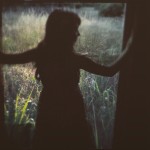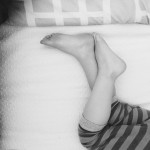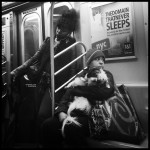This month we are looking at the work of Crystal @faithmichael for the genre of Minimalism. On it’s face, minimalism seems like an easy task to accomplish but it is actually a very exact science. A minimal work needs to be distilled to just show the barest forms and color to allow the viewer to experience the work without distraction. The Minimalist movement became more popular in the 1950’s although minimal works existed as early as the 1700. Minimalism has close ties to pop art and conceptual art.
Critique written by Rose Sherwood
I will attempt to write about a subject that I know very little about, minimalist photography. I had to do a bit of research on the subject of minimalism. There is a plethora of information about the subject, so much time was spent reading, taking notes and actually stripping away unnecessary information to only leave the important essential core of what minimalism is. The three photos that I am critiquing all present different subject matter. I do not know if they are by the same artist so I will not make the assumption that the three images are shot by the same person.
![image[1]](http://www.wearejuxt.com/wp-content/uploads/2013/10/image1.jpeg)
The first image is of a slatted fence. The fence is stained with a red-wood color. In the image there are three darker shadowed shapes that are a darker shade of red brown color. Two of the shadows present diagonal direction into the image and the third is vertical and emphasizes the direction of the wooden slats. There are nails present in the wood and the stain is weathered and enhances the texture of the grain of the wood. The spaces between the slats is very narrow and what is behind the fence remains a mystery.
The artist describes this fence as being one of the alleys in the neighborhood. It is photographed head on so that the spacing of the slats provides a rhythm to the piece. The background does not provide any information to this image. You can see bits of green if you look closely. Because I photograph detailed compositions, I have the response of wanting to tear this fence down to see what is on the other side or, at least, to punch a hole in the fence to peep through.
The quality of the image is such that it has a low contrast which flattens the total surface of the picture. I would have liked the artist to play with this aspect a bit more. More contrast or ambiance in an editing app like Snapseed would have brought both the shape of the shadows and the texture out a bit more. I do not know, however, the intention of the artist.
As a minimalist image, it fits. It has a limited palette with limited scale, direction, and texture. It is simple, but is it too simple that it is not as engaging a subject as it could be? In researching minimalism, I encountered much writing by Steve Johnson. Mr. Johnson writes a lot about the minimalist photographer. He writes about its perspective from a graphic design point of view and also from a reductive process point of view. I really liked the reductive view of working with an image because you, as the artist have complete control over what the end image looks like; the artist has the ability to strip away all the distractions and frills demonstrated by the image leaving only its essential characteristics and what you were attracted to originally as the photographer.
The fence photographer has specified that he/she was attracted to the texture and the gentle slow collapse and aging of the boards but the repetition of the wood was also important. This image is successful for presenting the graphic rhythm of the fence but I wish that the shapes of the shadows and the textures could have been pulled out a bit more. But, perhaps, in doing that, I would have pushed the image out of the genre of minimalism.
What Crystal had to say about her image:
The alleys of my neighborhood are my favorite place to practice composing compositions. The gentle collapse of this fence and it’s delicately weathered texture were just so elegant. I thought there was a chance to describe some of the subtle depth of this detail without losing the graphic quality of the repeating boards.
![image_2[1]](http://www.wearejuxt.com/wp-content/uploads/2013/10/image_21.jpeg)
The second image of the surface of water presents us with a full swirling color field of gray-blue. Reminiscent of a Helen Frankenthaler painting. There is the barest amount of color, texture, and detail in this image. It is minimal in its subject and the little light and shading that break the blue surface are not construed as focal points. If the artist had pushed the contrast and heightened it to get more darks and lights, and also more texture, would it be a more engaging image? Well, taking a screen shot, editing through Snapseed and increasing the contrast was what I did and I liked the image more. I also sent the image into the B&W arena. I was able to better focus on the detail of the submerged rocks. I liked the image more. Has this artist gone far enough with the reductive process? Taking an image and pushing out the elements that are there so that there is something more to be seen? I am not the artist of either of these images. My judgement might be disabled by learning more about the artist and what style their body of work contains. In this case knowing more about the photographer would enable me to know if their work is successful in the minimalist world where “… less is more…”!
What Crystal had to say about her image:
For me to feel like an image I’ve produced is truly “minimal” I need to apply those principles to the entire process (the shot and the edit). I have spent most of the summer working on more complex and descriptive compositions with light and shadow in monochrome shooting with hipstamatic, cropping sparingly, and then editing in VSCOcam. I wanted to utilize a similar process utilizing VSCOcam only for some 3:2 color images. For this photo I wanted to focus on the texture of the water with hints of what lay just beneath the surface.
![image_1[1]](http://www.wearejuxt.com/wp-content/uploads/2013/10/image_11.jpeg)
The artist’s image of the fire escape is the most playful, lyrical image of the trio of pictures received to critique. This image, for me, is the most engaging of the three pictures. It has a strong composition based on the lines created by light, shadow and real object. The textures and lines of the brick wall play well with the solid black lines horizontally and vertically set by the banister in front. But it is the lighter shadow that plays above the banister’s rail that, for me is the most enticing and interesting. I don’t know where it originates from. The object that is producing this gentle shadow is completely out of the picture. Yet, here it is like a sheet of music appearing, connecting and touching four round black notes, regularly spaced, becoming part of the banister. The rules of light source, light direction and production of a shadow do not compute in this area of the image. Why and how this light shadow is in the picture remains a mystery. This is intriguing. Is there an extended balcony that is above that is projecting the shadow onto the brick wall? There are no other shadows except for the shadow present under and at the bottom of the brick wall. So the light source must be from above. Perhaps, it is another fire escape but the rhythm of the lines has changed rather than lines that are evenly spaced, these lines travel in triplicate. This is the most perplexing and engaging image and I keep looking and thinking about it.
If these images are shot by the same person, then I do believe that they fit the genre of minimalism. The artist has stated that these images were 3:2 and edited through the VSCOcam app. They all have a similar look but I would not gather them together as a series. The subject matter separates them from each other. They must stand on their own merits. They are minimalist images. Are they successful as minimalist images? As stated above, I want to know more about how (in regards to both process and intent) the artist works and see a body of work that encompasses the understanding of minimalism. I have a feeling that there is more to it than photographing “…less is more…”
Minimalism has rules that artists follow. Some attend to them with rigor and others are looser in their adherence. Many of the articles that were read mentioned the importance of composition (the rule of thirds and leading lines) , simplicity in the subject matter photographed , the use of bold, strong color, an awareness of the background, strength to engage the viewer(s) of the work, paring the photograph down to its’ essential elements and the ability to tell a story.
What Crystal had to say about his images:
When I first started taking pictures with my phone I would (literally) have dreams about this fire escape shadow at night. I was still pretty shy about standing in the street taking pictures of walls with my phone but eventually managed to grab one. I walk by this building often and decided it was worth revisiting. Particularly since the light on this occasion illuminated this wonderful play of lines between the shadow of the wall and the bannister just in front of it.
Critique written by Stephanie
So much detail. Yet so simple.
An interesting portrait of a fence: color, texture, the hint of what lie behind the fence. Hinges nails shadows….o my!
I found myself having to zoom in so I could peek into the sliver.
It was fun being able to see so clearly the brick wall and items.
It’s not easy to make the ordinary stand out.
The shadow on the hinge and borders adds dimensional. Choosing to capture this with the shadows shows a discerning eye. Gorgeous!
There only one thing that sort of throws me off. The center shadow feels displaced.
I can’t help but wonder how this would look without it claiming attention.
I suppose if it’s a fixed object and can’t be avoided.
I think in contrast to the lineal aspects of this fine composition it’s an oddity.
Again…that my own personal taste.
You obviously have some good dreams! This is such a spot on composition. Its good to question how something would look if hung on a wall framed. I learned that early on determining whether or not a photograph was worth keeping.
This has texture and color and patterns. It’s subtle but interesting. A good example of minimal which proves to be more. A modern statement for ones walls.
The subtle flow of colors are very appealing. The overall tonal values work well. I appreciate the various shades of blue. The foreground of rocks are what really bring life to this. It’s very interesting to zoom in closer on them. Doing such creates more depth and texture. The minimal yet strong contrast of the coral and kohl rocks provides an interestingness to the whole composition.
You definitely have accomplished your goal to focus on the waters texture.
Yet for me personally, I found it a challenge to appreciate.
Having to really look see I was able to define what really worked for this.
Again, that is just my POV.
The purity of a solid shot without the fanfare of post processing is the backbone by which one can have license to edit as they see fit.
While it is best to frame ones image straight in camera without having to crop, sometimes a nice crop can work well.
Our Panelists:
Rose Sherwood Rose is a retired art teacher. She taught art on the elementary level for 22 years. She also taught on the high school level and in a museum setting too. She enjoyed teaching and misses the students. Before teaching she worked in brain research because her first college degrees were in both the fields of Biology and English. She met and married a great guy and when their son, Matthew, was born, she went back to school to study art. She continued her education at RIT and earned an MFA in painting and photography and then returned and acquired a MsT in art education.Her teaching career was very full but one of the memorable times was being honored to be a recipient of a Fulbright Memorial Fund Fellowship to study in Japan. It was a pivotal experience that changed her and her teaching practices. Her students benefitted from her experiences. Their daughter, Laura, introduced Rose to IG and returning to all things of photography has occurred. IG was a way to communicate with family and friends about T., her husband, and his bone marrow transplant. She has been as active caretaker for him.
Stephanie I am just another person trying to stop time. Photography helps.
Going mobile makes sure I don’t miss a second.
Well…at least it could, if I see(seize) it.
About Author
Latest stories
 Featured ArticlesApril 13, 2015The Storytellers Vol. 4
Featured ArticlesApril 13, 2015The Storytellers Vol. 4 StoriesMarch 3, 2015Momdom
StoriesMarch 3, 2015Momdom Anna CoxFebruary 24, 2015Captain and the Kid
Anna CoxFebruary 24, 2015Captain and the Kid Anna CoxJanuary 19, 2015Honest Moments by Caleb Stumpfl
Anna CoxJanuary 19, 2015Honest Moments by Caleb Stumpfl

Crystal, I started following you today! I did not want to give myself away! Exploring your gallery shortly after writing the critique, there are absolutely no doubts about your expertise as a minimalist photographer. You know how to get it done. I learned a great deal about minimalist images and every now and then might include one within my own eclectic gallery.
Great critique Steph and Rose, and bravo Crystal for putting yourself out there!
Jeff, what an incredible experience! I loved reading what Rose and Stephanie had to say. Truly, this is probably the most I’ve learned about what and how I see since I’ve started this mobile photo journey.
I really enjoyed this little project.
Having no information other then the images and photographers to make an assessment.
When the article was posted on IG immediately went to visit the owner of these photos.
After considering her work, it felt as if this critique was designed more for me then the photographer.
This assignment called for stop and pause without influence, so as to consider what another dared share.
That conscientious assessment as opposed to , look see leave ,is what one would hope for within a community.
That engagement, followed by the write up from Rose , a tour of Crystals gorgeous feed, learning more of the less, truly felt productive.
*
Rose and Stephanie, how wonderful to to have the opportunity to view these images through your eyes! I was a little intimidated when Anna first approached me to offer some photos (and after she revealed who would be critiquing them I was a LOT intimidated!). That being said this might be one of the coolest moments I’ve had since starting mobile image making. The JUXT critique project is so valuable since it can be such a rare moment to give and receive honest and thoughtful feedback on social networks. Thank you both so much for your incredibly insightful narratives!!
I am a huge fan of Crystal’s work! A wonderful critique — thank you ladies!
Great article Crystal, Rose, and Steph.